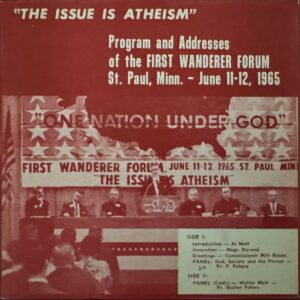+ A.M.D.G. +

13. THE VESTMENTS AND SACRED VESSELS USED AT MASS
He who is granted an audience of an earthly monarch dresses himself in full dress out of respect to that monarch; and the priest, when he appears before the King of kings at the altar, is arrayed in suitable vestments. These vestments show that he does not act of his own power, but as the representative of Christ. God Himself gave directions concerning the vestments which were to be worn by the priests under the Old Testament (Exod. xxviii. 4). The vestments to be worn by the Christian priests were prescribed by the apostles.
1. The vestments which the priest wears in the celebration of Mass consist of (1), the amice; (2), the alb; (3), the girdle; (4), the maniple; (5), the stole; (6), the chasuble.
The amice is a white linen cloth laid about the head and shoulders. Formerly it used to be placed over the head like a hood, to keep the priest from distractions at Mass. The alb is a white linen garment, reaching from head to foot. In the East it was customary to wear a white robe on festival occasions, as for instance, when invited to a wedding. In the parable of the marriage-feast, Our Lord makes mention of the “wedding garment” (Matt. xxii. 12). The girdle is a cord which fastens the alb together, so that it may not inconvenience the priest in walking. It is said of the young Tobias, when he was seeking a companion for his journey, that he found a young man, standing girded, as it were ready to walk (Tob. v. 5). Our Lord also says: “Let your loins be girt” (Luke xii. 35). The maniple was at first a linen cloth which was worn on the left arm, representing the cloth wherewith Our Lord’s countenance was wiped. The stole is a long band of silk which hangs down from the neck and is crossed on the breast. It is the special sign of the sacerdotal office, therefore the priest wears it whenever he exercises his priestly functions. The chasuble is a garment which covers the priest before and behind, reaching down to the knees; in early times it was a kind of mantle, with only one opening, through which the head was passed, whence came the name casula, a little house. At other times than at Mass the priest wears a short alb or surplice, or a cope. At High Mass the deacon and sub-deacon wear special vestments, called dalmatics.
2. The various portions of the sacerdotal vestments are commemorative of Our Lord’s Passion, and also serve to remind the priest of the duties of his office.
The amice represents the cloth with which the soldiers muffled Our Lord’s face when they struck Him; the alb represents the white robe in which Herod arrayed Him in mockery; the girdle, the cords wherewith He was bound; the maniple, Veronica’s handkerchief; the stole, the rope laid about Our Lord’s neck after His condemnation; the chasuble, on the back of which is a cross, the cross He bore on His shoulders. The amice reminds the priest to observe custody of the eyes; the alb betokens purity of heart; the girdle, abstemiousness, purity, and self-control; while the stole signifies his dignity as a priest, and the chasuble the heavy responsibilities that rest upon him.
3. The principal things which are used in saying Mass are: The chalice, the paten, and the missal.
The upper part of the chalice must be of gold, or silver, gilt in side. The paten is a small plate, whereon the sacred Host is laid; it must be gold or silver-gilt. Both chalice and paten must be blessed by the bishop. The missal contains the prayers that are said in every Mass, and those which vary according to the seasons and days of the ecclesiastical year. The ciborium somewhat resembles a chalice; it has a cover, and in it the consecrated Hosts are reserved for the communion of the faithful. The monstrance is sometimes used for the exposition of the Blessed Sacrament. Some worldlings are inclined to say as Judas did, when Magdalen anointed Our Lord’s feet: “To what purpose is this waste?” when they see the care and money expended by Catholics on the sacred vessels and furniture of their churches. They should, however, consider how greatly the beauty of God’s house impresses the beholder and conduces to devotion; and that it is, moreover, only right to give what is most precious and beautiful for the service of God. Why should the house of God be less richly adorned than the mansions of the wealthy?
« Previous Section
12. THE PLACE WHERE MASS IS TO BE CELEBRATEDNext Section »
14. THE COLORS OF THE VESTMENTS
This article, 13. THE VESTMENTS AND SACRED VESSELS USED AT MASS is a post from The Bellarmine Forum.
https://bellarmineforum.org/bf_catechism/the-catechism-explained/part-iii-the-means-of-grace/i-the-holy-sacrifice-of-the-mass/13-the-vestments-and-sacred-vessels-used-at-mass/
Do not repost the entire article without written permission. Reasonable excerpts may be reposted so long as it is linked to this page.
